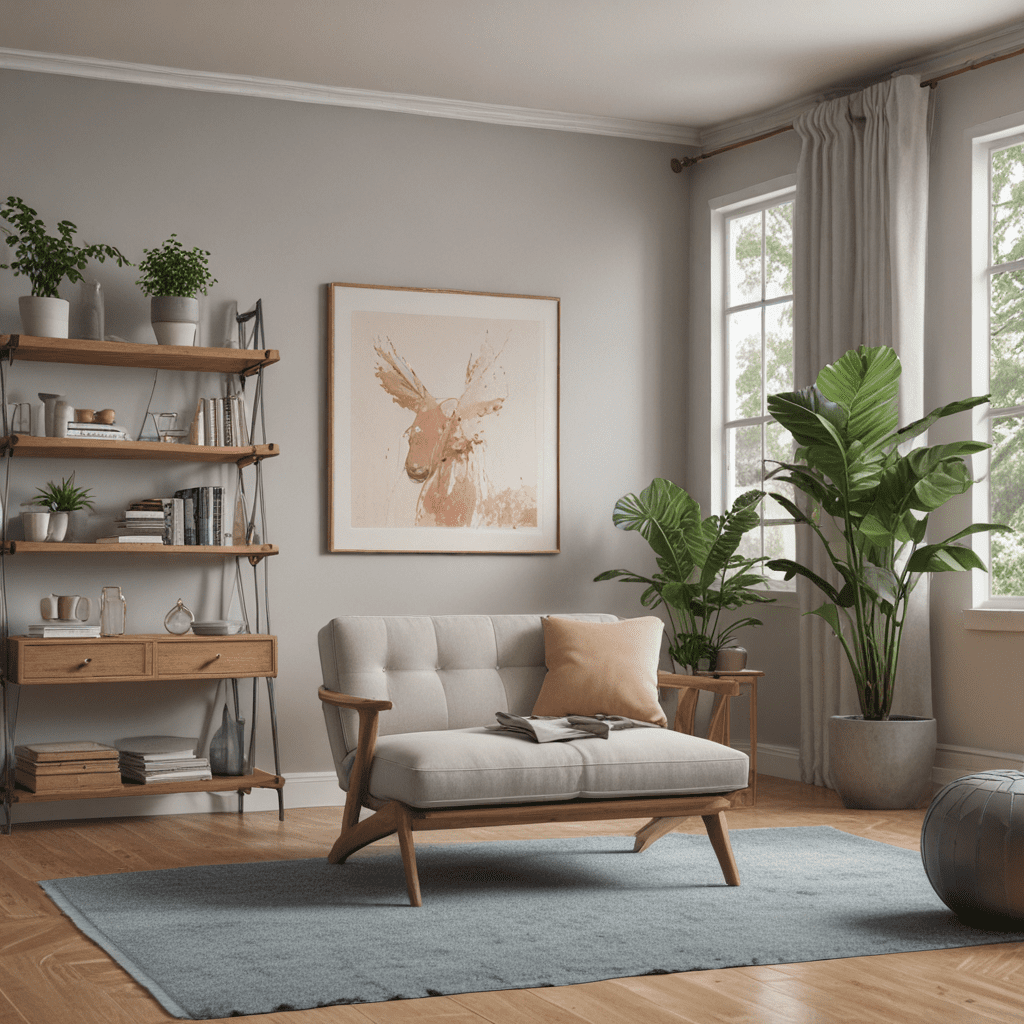
Importance of Creating a Relaxing Space
In today's fast-paced world, stress has become an inevitable part of our lives. Creating a relaxing space in our homes can be a powerful tool to combat stress, promote tranquility, and improve overall well-being. A dedicated space designed for relaxation provides a sanctuary where individuals can unwind, decompress, and recharge both physically and mentally.
Choosing the Right Location and Ambiance
The location of your relaxing space is crucial. Choose a place that is private, quiet, and free from distractions. The ambiance should evoke a sense of calm and tranquility. Consider factors such as natural light, ventilation, and the overall aesthetic appeal of the space. Surround yourself with elements that bring joy and inspire relaxation, such as calming colors, soothing scents, and comfortable furnishings.
Incorporating Natural Elements and Sensory Stimuli
Incorporating natural elements into your relaxing space can have a profound impact on your mood and well-being. Studies have shown that exposure to nature can reduce stress, anxiety, and depression. Surround yourself with plants, natural materials like wood and stone, and elements like water features or wind chimes that stimulate your senses and create a soothing atmosphere.
Decluttering and Organizing Your Space
Clutter can contribute to stress and anxiety. Declutter and organize your relaxing space to create a sense of order and peace. Remove unnecessary items and keep surfaces clear. Arrange furniture and objects in a way that promotes relaxation and ease of movement. By minimizing distractions and creating a visually pleasing environment, you can enhance the overall calming effect of your space.
Choosing Relaxing Colors and Lighting
Colors and lighting play a vital role in creating a relaxing space. Choose colors that are known to promote relaxation, such as blues, greens, and purples. Avoid bright or harsh lighting, as they can stimulate the mind and make it difficult to unwind. Instead, opt for warm, soft lighting that creates a cozy and inviting atmosphere.
Adding Comfort and Functionality
When creating a relaxing space, comfort is paramount. Choose furniture that is soft, supportive, and inviting. Consider adding cozy cushions, blankets, and throws to enhance the sense of comfort and coziness. Make sure your space is functional as well by including storage options to keep essential items organized and out of sight.
Creating a Calming Atmosphere with Scents and Sounds
Engage your senses to create a truly immersive and relaxing experience. Incorporate calming scents through essential oil diffusers, scented candles, or aromatic plants. Choose scents known for their soothing and stress-relieving properties, such as lavender, chamomile, or eucalyptus. Gentle and soothing sounds can also contribute to a relaxing atmosphere. Consider playing calming music, nature sounds, or white noise to help you de-stress and unwind.
Including Plants for Purification and Well-being
Plants not only add a touch of nature and beauty to your relaxing space but also provide air purification benefits. Certain plants, such as peace lilies, spider plants, and snake plants, are known for their ability to remove toxins and improve air quality. The presence of plants has also been linked to reduced stress levels and improved mood.
Personalizing Your Space with Meaningful Objects
Make your relaxing space truly personal by adding meaningful objects that evoke positive emotions and memories. Display photos of loved ones, artwork that inspires you, or objects that hold sentimental value. Surround yourself with items that bring you joy and comfort, creating a space that is uniquely yours and fosters a sense of well-being.
Maintaining Your Relaxing Space for Continuous Benefits
To ensure your relaxing space continues to provide its intended benefits, regular maintenance is key. Keep the space clean and organized, regularly declutter unnecessary items, and tend to plants to keep them healthy and thriving. By investing time and effort into maintaining your space, you can prolong its calming and restorative effects and enjoy its benefits for years to come.
FAQs
Q: How often should I use my relaxing space?
- It depends on your individual needs and preferences. Aim to use your space regularly, even for short periods, to reap its stress-reducing benefits.
Q: What are some activities I can do in my relaxing space?
- Engage in activities that promote relaxation and de-stressing, such as meditation, reading, journaling, or listening to calming music.
Q: How can I make my relaxing space more budget-friendly?
- Utilize natural elements like plants and sunlight, upcycle items into decorative pieces, or explore thrift stores for affordable finds.


